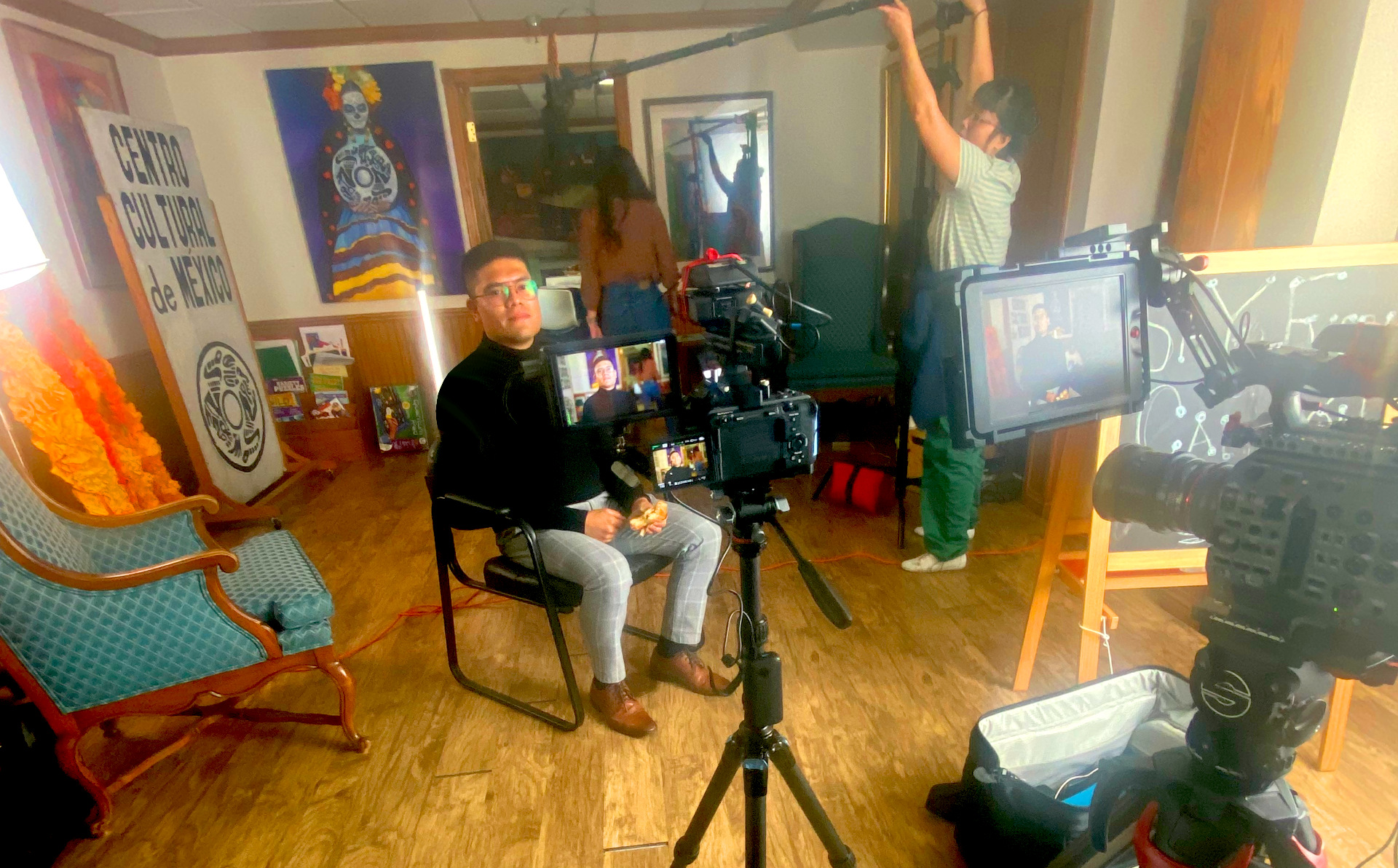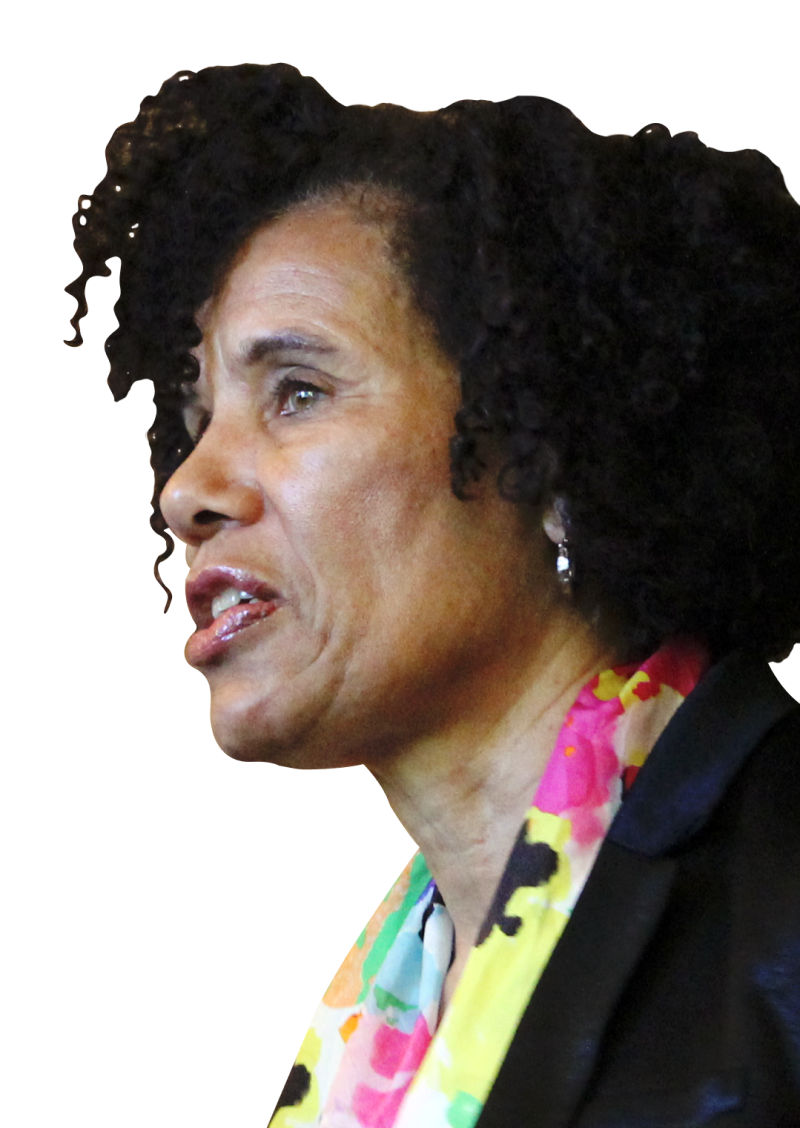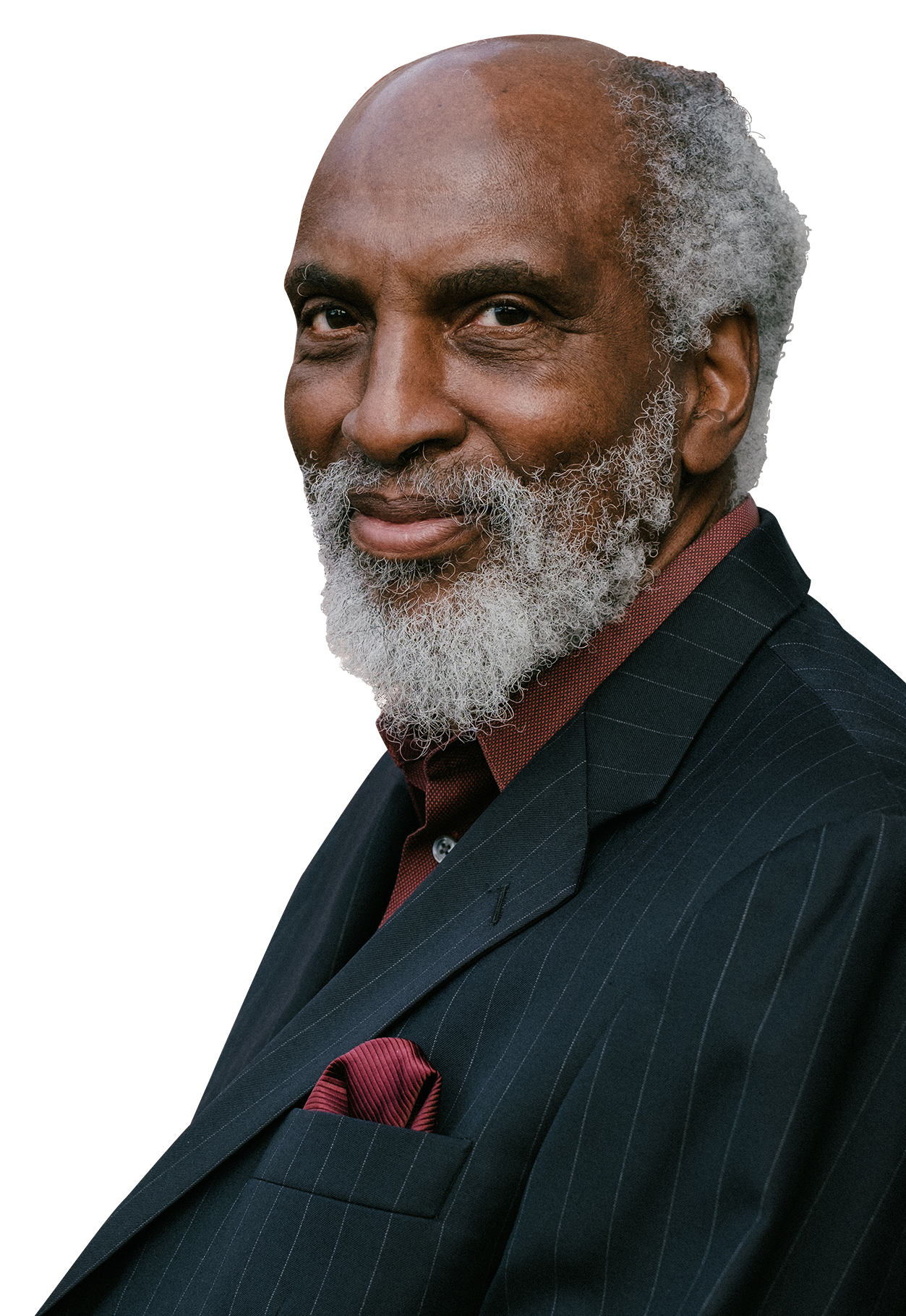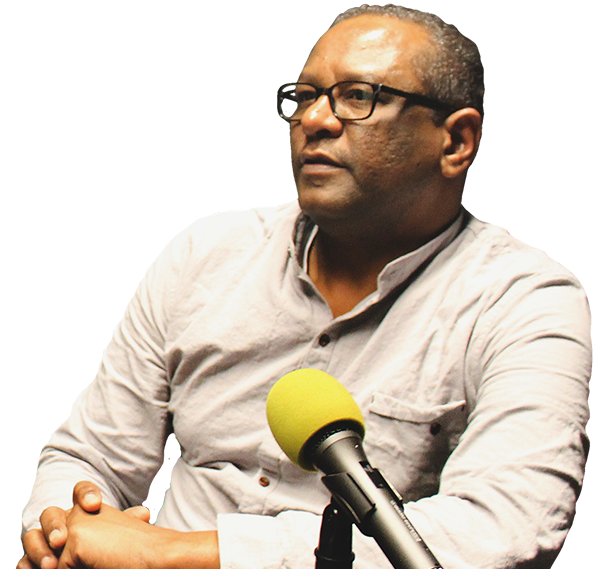
Caption: Movement groups film 'Power in Belonging' video series in Santa Ana, CA alongside OBI staff. Production by Time of Day.
In OBI’s community-engaged research, we often hear community members and neighbors express a readiness to bridge that exceeds expectations. There is a thirst that spans demographic groups and geographies to be able to connect with others across lines of racial, linguistic, and other differences, and to build real mutual understanding. The problem is that most people don’t know how or where to get started. They may have the courage and willingness, but lack a clear space or structure to bridge. Civic and community organizations are uniquely positioned to provide these; often they need to catch up to the aspirations of community members.
This blog tells the story of community organizations that are meeting the need for bridging spaces for their communities. It offers an example of organizational leadership in cross-cultural and intergenerational connection. Orange County, California organizations VietRISE, Tenants United Santa Ana, El Centro Cultural de México, Bali Hi Mobile Home Residents Association, and Harbor Institute for Economic and Immigrant Justice are showing what it looks like to “turn toward each other, instead of on each other,” and to create societies where we can all participate.1 The leadership of Vietnamese and Latinx activists in the part of the county spanning Little Saigon and its surrounding neighborhoods serves as an inspiration for organizations seeking to build bigger “we” identities across social differences.
The Blueprint for Belonging project at OBI is proud to have partnered with these organizations to highlight and document the transformative work of bridging in Orange County. We recently developed the video series, Power in Belonging, which captures some of the stories of bridging featured in this blog. A Viewer's Guide for learners across high school and college classrooms was created to accompany the videos.
Identifying Tensions and Opportunities for Bridging
Founded in 2018, VietRISE is a non-profit organization advancing social justice with working-class Vietnamese and immigrant communities in Orange County, CA. Founder and Executive Director Tracy La knew that other local immigrant communities were impacted by hardships similar to those that Vietnamese people faced. However, long-standing public narratives, assumptions, and misperceptions created divides between different immigrant groups.
One set of prominent narratives that sowed mistrust has to do with the differential terms of entry that the U.S. has afforded to people of different countries of birth. While Orange County includes a rich diversity of immigrant communities, not all have had access to the same pathways to “legalizing” their migratory statuses. For example, structures in place for those seeking refugee status from Vietnam in the 1970s have not been made available to immigrants from Mexico or Central America. When cities in Orange County began passing anti-sanctuary resolutions in 2018, some local Vietnamese elected officials expressed support for the measures. La remembers that they defended this position by saying that Vietnamese people “came [to the U.S.] the right way,” drawing a contrast with other groups that supposedly had not. As Vincent Tran, former Organizing Director for VietRISE, put it, “A lot of the rhetoric really used, ‘the Vietnamese community, we came here the right way’... totally saying every other experience doesn’t matter. ‘They don’t deserve the same rights that we do.’”
VietRISE pushed back against the dominant rhetoric that some immigrants are more deserving than others, rejecting the idea that anyone should be denied rights or belonging based on how they arrived in the U.S. The organization began the long-term work of building deep, lasting relationships with other immigrant communities in Orange County, rooted in solidarity and shared struggle. La describes this solidarity as a commitment to ensure that local leaders are not “using our identity to harm other communities.”2
How Do Organizations Start Bridging?
“It takes one-on-one conversations,” says La. For VietRISE, moving from the intention to practice bridging into fostering trustworthy relationships took consistent effort. Individual discussions with influential local Latinx activists set the groundwork for designing broader, structured events. The leaders of organizations including VietRISE, El Centro Cultural de México, and Harbor Institute for Economic and Immigrant Justice spent time learning about one another’s distinct cultures, histories, and the values and elements of identity that follow from them.
One pivotal event was a cultural exchange panel led by VietRISE and the National Day Laborer Organizing Network (NDLON) in 2019. Panel speakers included members from both Central American and Vietnamese communities, and the invitation was open to the public. The panelists shared their personal stories of migration to the U.S. from Vietnam and Central America, and their involvement with sanctuary movements in the 1980s and in 2018. Members from multiple immigrant communities attended.
La describes the event as emotional, and a critical point of trust-building. One Vietnamese elder recounted her experience as a refugee, while also acknowledging and drawing a connection to the harrowing experiences of Central Americans. For some Latinx organizers present, this shattered the belief that elder Vietnamese people did not care about other immigrants’ struggles. Many Vietnamese immigrants had to navigate anti-immigrant sentiment when they first arrived in the United States, and talked of wanting to stop that kind of sentiment in the present day.3 It was a breakthrough moment for many in the room, who felt seen by the other group for perhaps the first time.
The connections between Vietnamese and Latinx activists extended into action. When Latinx organizers in Orange County fought local anti-sanctuary policies in 2019, they invited VietRISE to join them. And VietRISE showed up. Carlos Perea, Executive Director of Harbor Institute, remembers this as a turning point. “The really important part of this bridging that took place is seeing for the first time that our communities are showing up for each other,” he recalled.4 Nights spent at city council meetings were accompanied with post-meeting bonding over phở (Vietnamese soup) and growing friendship.
In 2020, Latinx activists took action to support Vietnamese communities as they contended with rising discrimination against Asian American communities amidst the COVID-19 pandemic. When incidents of racism against Asian American communities began manifesting in public schools, there was a joint effort by school officials, VietRISE, and Latinx organizers to halt these growing manifestations of hate.5
Community Agency and Transformation
Growing bonds and trust allowed for collaboration across issue areas. One was the skyrocketing cost of rent. Latinx organizers working with Tenants United Santa Ana and Vietnamese seniors from the Bali Hi Mobile Home Residents Association both faced unaffordable rising housing costs, resulting in threats of eviction. In 2019, both groups separately advocated for local rent control policies in Santa Ana. Tri Le, a resident of the Bali Hi Mobile Home Park, recalls waiting at a city council meeting until 2:00 am to speak.6 Despite these efforts, rent control policy in Santa Ana did not pass.
However, when the movements connected in 2021 - with the help of VietRISE - a new solidarity emerged. Due to the trust VietRISE built with both Latinx movement organizers and Vietnamese residents of Bali Hi, they brought the groups together. A 2021 rent control policy passed with a 4-3 City Council vote. After voters approved a ballot measure during the 2024 General Election, the rent control ordinance is now enshrined in the Santa Ana City Charter, making it a permanent change that will impact generations to come.
The rent control campaign advanced efforts for intergenerational relationships and bridging. Mextli, a leader with Tenants United, recalls seeing “seniors who had worked all their lives, and all they wanted was to live out the rest of their days in their home.”7 Hearing one another’s stories brought mutual recognition across differences. From it emerged a shared desire to ensure that seniors could stay in their homes and to prevent displacement across Santa Ana. Idalia, another Tenants United leader, describes hope propelled by “preparing a better future for everyone.”8 The rent control campaign became a practice in mutual care, fundamentally about keeping neighbors in their homes. La notes that the “number one thing” that VietRISE looks for in organizers isn’t political acumen or prior experience - it’s genuine care for others. Compassion is central to VietRISE’s vision.
Partnership with the Othering & Belonging Institute
The Othering & Belonging Institute has been in partnership with VietRISE as part of the Blueprint for Belonging (B4B) project since 2019, working together to build research and narrative capacity for belonging for all, without othering, in Orange County. The idea for the Power in Belonging video series emerged organically from ongoing collaboration.
“The B4B project has always been fundamentally concerned with bridging divides in communities across California,” says Olivia Araiza, co-founder and director of the project at OBI. “From when we first met VietRISE, it was clear that the organization was not only a kindred spirit, but also an innovative leader for the community organizing field. Sharing the stories of how bridging has been implemented to transform Little Saigon is important because it offers a model for multi-racial, intergenerational organizing.”
OBI supported a process of listening to local experts on diverse community histories, envisioning an arc for the video series, and developing scripts for community members to share their stories. The resulting “Power in Belonging” series reaches audiences of young people, college students, and community members, to showcase the power of multi-racial solidarity in the hopes of inspiring others to bridge across differences. A premiere screening of the video was held in September 2024, with VietRISE hosting the event at Tram Chim Restaurant, followed by an intergenerational, multi-lingual panel discussion with some of the organizers highlighted in the series.
Relationships that Endure
Efforts to bridge across identity lines have not been without conflict. Some organizational relationships are more fragile than others. Community members make mistakes, such as mispronouncing each other’s names. In these cases, La says the idea of being ‘soft on people and hard on systems’ resonates. The focus is on learning. But when it comes to advocacy, La says that she sometimes uses a ‘hard on systems and medium on people’ approach. Challenging viewpoints is part of the work. When there are considerable disagreements, partners engage in long discussions and sift through their beliefs. Sometimes there’s resolution, and other times there isn’t - organizations are not working together across all issues. The important thing is that relationships endure. La sees multi-racial solidarity as an active choice. Bridging is an ongoing commitment to building a more expansive community.
Critically, bridging isn’t about conformity or sameness. Celebrating unique aspects of one another’s culture has been core to the bridging effort. When asked what is the most important thing she’s learned in bridging work, La says, “Being myself. Being our authentic selves is very, very important.”
--
Editor's note: The ideas expressed in this blog are not necessarily those of the Othering & Belonging Institute or UC Berkeley, but belong to the author.
- 1john powell with Rachelle Galloway-Popotas, The Power of Bridging: How to Build a World Where We All Belong, (Sounds True, 2024), p. 76
- 2“Power in Belonging,” VietRISE and Othering & Belonging Institute, 2024, https://vietrise.org/power-in-belonging/.
- 3Tracy La, “We Were Also Told to ‘Go Back’, It’s time for Vietnamese-American Electeds to ‘Bring Human Rights Home’,” Voice of OC, July 2019, https://voiceofoc.org/2019/07/la-we-were-also-told-to-go-back-its-time-for-vietnamese-american-electeds-to-bring-human-rights-home/?fbclid=IwAR1to6_-e6qcs4lZaxDtwD5fzQfshSvW571yMqzHwGCz73G8eASQhdpkL5o.
- 4“Power in Belonging: Solidarity in Sanctuary,” VietRISE and Othering & Belonging Institute.
- 5Ben Brazil, “Community meeting held to shed light on racism stemming from coronavirus,” The Los Angeles Times, March 19, 2020, https://www.latimes.com/socal/daily-pilot/entertainment/story/2020-03-19/coronavirus-garden-grove-racism
- 6“Power in Belonging: Bridging for Our Homes,” VietRISE and Othering & Belonging Institute.
- 7 Ibid.
- 8 Ibid.




